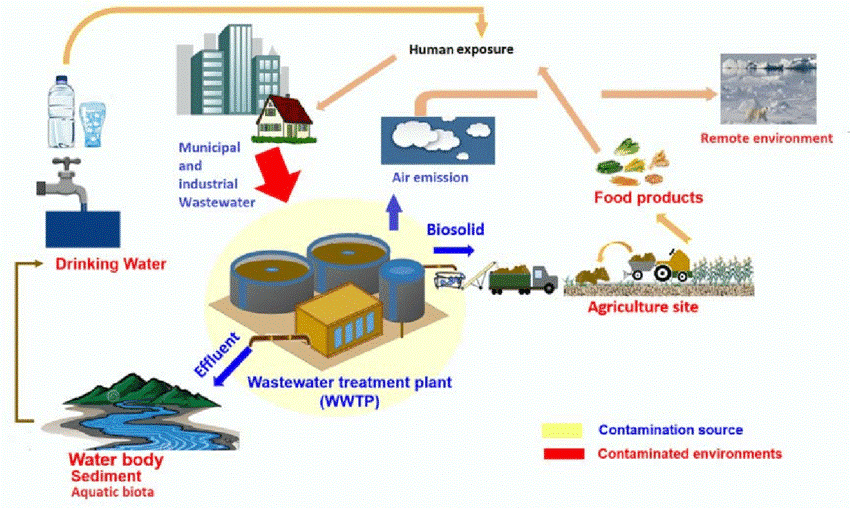Ingenious PFAS Treatment Solutions for Safer Water
The increasing frequency of PFAS contamination in water products requires an important evaluation of innovative therapy solutions. Advanced filtration technologies and unique chemical treatments present encouraging opportunities for reducing these relentless contaminants. Additionally, arising bioremediation methods offer an even more lasting technique to taking on PFAS challenges. As regulatory structures continue to adjust, recognizing the efficiency and scalability of these remedies comes to be vital. What implications do these improvements hold for public health and wellness and environmental restoration, and how can stakeholders successfully execute them in diverse contexts?
Review of PFAS Contamination
PFAS contamination has actually emerged as a significant ecological and public health problem. Per- and polyfluoroalkyl materials (PFAS) are a team of synthetic chemicals known for their persistence in the atmosphere and body, leading them to be commonly referred to as "forever chemicals." These compounds have actually been commonly made use of in different industries, consisting of firefighting foams, water-repellent materials, and food product packaging, largely because of their water- and grease-resistant residential or commercial properties.
The widespread use PFAS has resulted in their discovery in dirt, water products, and even in the blood of people and animals. Studies have connected PFAS direct exposure to many health and wellness problems, including developmental results in babies, body immune system dysfunction, and various forms of cancer cells. In addition, the ecological determination of these substances complicates their degradation and removal, elevating worries regarding long-term eco-friendly influences.
Regulative bodies are increasingly applying rigorous guidelines to monitor and lower PFAS degrees in drinking water and various other ecological mediums. As recognition of PFAS contamination expands, it has come to be essential for areas and markets to seek efficient treatment solutions to alleviate exposure and guard public wellness.
Advanced Filtering Technologies
As the necessity to attend to PFAS contamination heightens, advanced purification innovations have become a critical component in the removal efforts intended at eliminating these relentless chemicals from water sources. These modern technologies take advantage of innovative mechanisms to properly target and catch PFAS substances, which are notoriously resistant to standard treatment approaches.
One of the most appealing strategies is making use of granular turned on carbon (GAC), which adsorbs PFAS molecules due to its high area and porous framework. This technique has been commonly implemented in both local and industrial setups, showing considerable reductions in PFAS focus. Additionally, ion exchange materials have actually acquired traction, especially made to selectively bind PFAS ions from water, therefore promoting their elimination.
Membrane filtering innovations, such as reverse osmosis and nanofiltration, additionally show efficacy in PFAS removal by literally dividing impurities from water - pfas management. These systems can achieve high levels of pureness, making them ideal for alcohol consumption water applications
Chemical Therapy Developments
Various chemical treatment technologies are being checked out to successfully address PFAS contamination in water materials. One encouraging strategy entails the use of sophisticated oxidation processes (AOPs), which use effective oxidants such as ozone, hydrogen peroxide, or chlorine dioxide integrated with UV light to break down PFAS compounds into less dangerous materials. This method has shown effectiveness in research laboratory settings, showing prospective for scalability in real-world applications.
Another innovative technique is the development of ion-exchange materials especially created to target PFAS. These materials can selectively adsorb PFAS compounds from water, permitting their elimination during treatment procedures. Current developments have boosted the performance and capability of these resins, making them a favorable alternative for water therapy facilities.
In addition, scientists are examining using chemical representatives like persulfate and ferrous ions to boost the destruction of PFAS in polluted water. These agents can induce chemical responses that assist in the break down of persistent PFAS substances.
Emerging Bioremediation Techniques
Current developments in chemical therapy developments have led the way for discovering bioremediation methods as a practical choice for attending to PFAS contamination. Bioremediation harnesses the all-natural metabolic processes of microbes to weaken or transform pollutants, making it an enticing go now method for dealing with relentless impurities like PFAS.
Arising techniques in bioremediation consist of the use of genetically engineered microbes that can particularly target and damage down PFAS compounds. These microbial pressures are being established for their enhanced deterioration capabilities, boosting the efficiency of the removal procedure. Furthermore, scientists are examining the possibility of web plant-assisted bioremediation, where specific plant species may uptake and withdraw PFAS from contaminated dirt and water.
Another encouraging approach is the application of bioaugmentation, which includes introducing beneficial bacteria right into polluted environments to improve the degradation of PFAS. This technique can help with much faster remediation timelines and enhance total efficiency.

Regulative Structures and Criteria
A thorough regulatory framework is essential for efficiently managing PFAS contamination and making sure public health defense. The enhancing acknowledgment of per- and polyfluoroalkyl materials (PFAS) as environmental contaminants has actually triggered numerous federal and state companies to create requirements that control their presence in water products. The U.S. Environmental Security Company (EPA) has developed health advisories and is pursuing establishing enforceable limitations for PFAS in drinking water.
State-level laws vary significantly, with some states taking on stricter standards than those suggested by the EPA. These regulations often consist of maximum pollutant degrees (MCLs) for details PFAS compounds, tracking needs, and reporting responsibilities for water utilities. Additionally, emerging structures focus on the remediation of infected websites, emphasizing the need for reliable treatment technologies.

Final Thought
To conclude, the development and implementation of cutting-edge PFAS therapy services are important for dealing with the pervasive concern of water contamination. Advanced purification modern technologies, chemical therapies, and emerging bioremediation techniques collectively offer a complex strategy to properly minimize and weaken PFAS degrees. As governing structures remain to progress, incorporating these innovations will certainly be vital to safeguard public health and bring back the stability of contaminated water resources, ultimately adding to a cleaner and more secure setting.